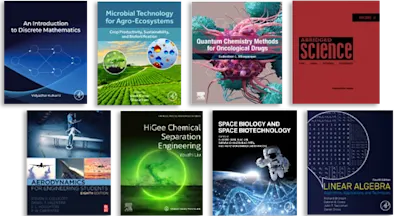
Similitude and Modelling
- 1st Edition, Volume 2 - April 30, 2013
- Latest edition
- Author: E. Szücs
- Language: English
Similitude and Modeling describes the theoretical aspects and application of similitude method using mathematical apparatus. This book is organized into two parts encompassing 13… Read more

Similitude and Modeling describes the theoretical aspects and application of similitude method using mathematical apparatus. This book is organized into two parts encompassing 13 chapters, and begins with an introduction to a simple technological problem in similitude modeling. The first part deals with the concept, physical fundamentals, dimensional analysis, and approximate and partial modeling of similitude. This part explores also the preparation and evaluation of similitude experiments, as well as the general types of similitude invariants. The second part highlights the application areas of similitude modeling, including heat conduction and diffusion, fluid dynamics, elastic deformation, and chemical reactions. This book will prove useful to plant and design engineers.
Preface A Simple Technological Problem 1. Direct Experiment 2. Test Run (The "classical Method") 3. Experiment Design 4. Dimensional Analysis 5. Analytic Solution 6. Numerical Solution 7. Similitude Modeling 8. AnalogyPart I. Theory Chapter 1. The Concept of Similitude Chapter 2. The Similitude Method 2.1. Geometric Similarity 2.2. Similitude of Phenomena 2.3. Physical Variables 2.4. Dimensional Homogeneity 2.5. Criteria and Invariants of Similitude Chapter 3. Physical Fundamentals (Transport Theory) 3.1. Extensities and Intensities 3.2. Balance Equations (Continuity Equations) 3.3. A Classification of Technological Processes Chapter 4. Types of Problems and their Solution 4.1. Types of Problems 4.2. Methods of Solution Chapter 5. Dimensional Analysis 5.1. The Purpose of Dimensional Analysis 5.2. The Method of Dimensional Analysis 5.3. Dimensional Analysis and Similitude Chapter 6. Modeling 6.1. The Model Concept 6.2. The Purpose of Modeling 6.3. Types of Model 6.4. Analogy 6.5. "Degrees of Freedom" and the Freedom of Choosing Model Parameters Chapter 7. Approximate and Partial Modeling 7.1. Approximate Similitude 7.2. Two-Dimensional Approximation 7.3. Partial Modeling 7.4. Conclusions Chapter 8. Preparation and Evaluation of Experiments 8.1. Preliminary Analysis 8.2. Measurement Errors 8.3. Design of Experiments Chapter 9. General Types of Similitude InvariantsPart II. Applications Chapter 10. Heat Conduction and Diffusion 10.1. Fundamental Equations 10.2. Examples Chapter 11. Fluid Dynamics 11.1. The Fundamental Equations 11.2. Examples Chapter 12. Elastic Deformation 12.1. The Fundamental Equations 12.2. Examples Chapter 13. Chemical Reactions 13.1. The Fundamental Equations 13.2. ExamplesIn Place of a PostscriptAnnotated BibliographyAuthor and Subject Index
- Edition: 1
- Latest edition
- Volume: 2
- Published: April 30, 2013
- Language: English
Read Similitude and Modelling on ScienceDirect